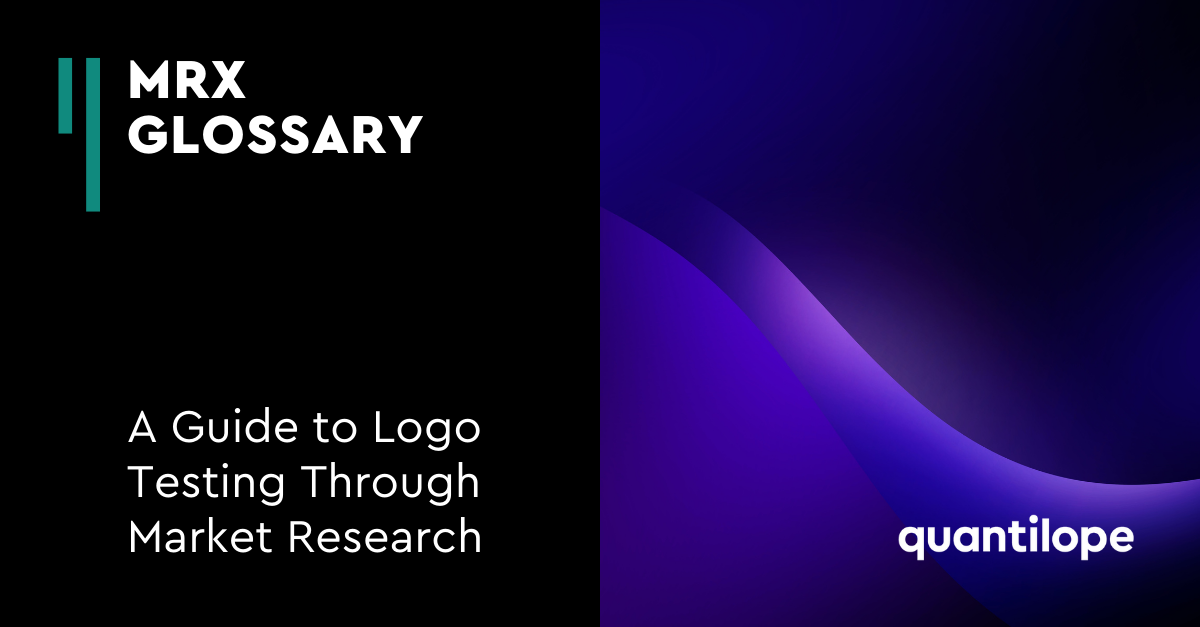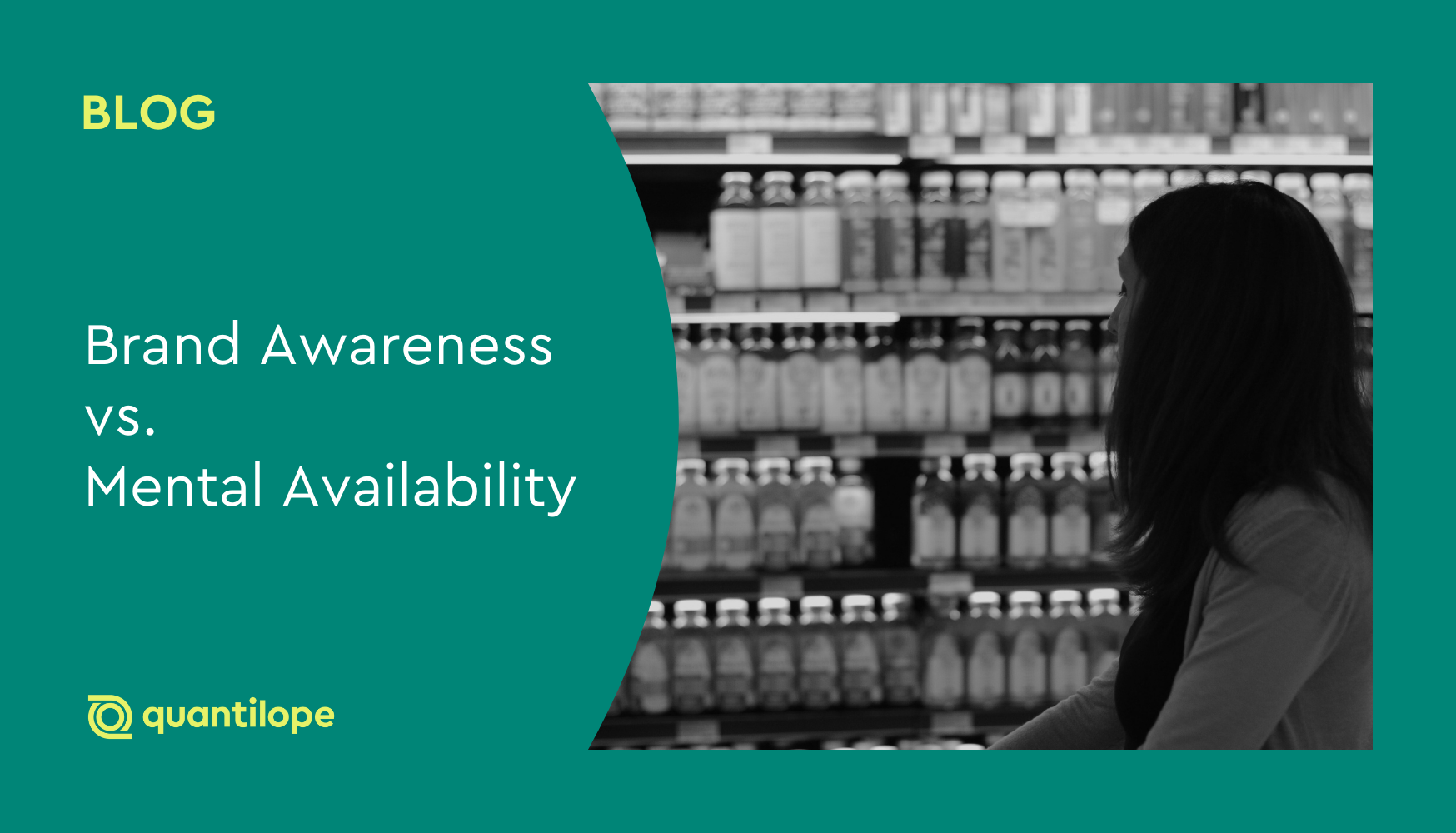In this blog post, learn why logo design testing is important and how market research can help optimize a logo’s impact.
Key Takeaways:
-
Logo testing evaluates how effectively a company's logo communicates its intended message, stands out from competitors, and resonates with target audiences through methods like surveys, focus groups, and eye-tracking studies.
-
Companies can test a single existing logo to measure recognition and effectiveness, or compare multiple logo variations simultaneously using A/B testing to identify the strongest design before market launch.
-
Advanced research methods including MaxDiff analysis, Implicit Association Testing, and A/B testing provide deeper insights into consumer preferences and subconscious reactions beyond standard survey questions.
-
Effective logo testing focuses on the target audience rather than general populations and incorporates brand-relevant attributes while testing logos both in isolation and within realistic contexts like packaging or advertisements.
- quantilope automates logo testing with drag-and-drop surveys, advanced methods (A/B testing, MaxDiff, Implicit Association Testing), fully customizable questionnaires, and inColor for video-based reactions with facial and sentiment analysis.
Table of Contents:
- What is logo testing?
- Why test your logo?
- How to conduct logo testing
- Best practices for logo testing
- Find a winning logo with quantilope
What is logo testing?
Logo testing is the process of evaluating the effectiveness and impact of a company's logo or brand identity.
It involves testing how well the logo communicates the desired message, whether the logo is memorable and recognizable, and whether the logo resonates with its intended audience. Logo testing can be done through various research methods such as online surveys, qualitative focus groups, or eye-tracking studies to gather feedback from potential and existing customers.
Back to Table of Contents
Why test your logo?
Logos are everywhere. All brands have one, whether it’s just their name in a simple font or an abstract mix of design elements that don’t mention the brand name at all. Yet, they all aim to fulfill similar roles.
Understand recognition
Logos represent the uniqueness of a brand. They stand for a lot: a company’s identity, its values, and its personality. Think about some of your favorite brands - their logos are probably unique and stand out in their own ways. It might be the bright red of Coca-Cola that catches your eye in the convenience store, the signature Starbucks green that you can't seem to miss on a street corner, or the familiar Oreo logo that you gravitate toward in the snack aisle.
Testing your logo to understand how well it stands out is valuable for your brand's future campaign planning and product development (i.e. making the logo bigger, bolder, changing the colors, etc., until the desired recognition is achieved).
Ensure effective communication
A good logo is distinctive, recognizable, and memorable - but it also should give consumers some idea of the type of business it represents. For example, you might not see a law firm using a hot pink bubble-letter logo, the same way you wouldn't expect a kid's toy brand to use intricate cursive writing. Test your logo to ensure it steers consumers in the right direction of what your brand offers.
Manage negative feedback
Sometimes brands get it wrong. This can happen in product packaging, new product development, messaging and advertising, and, logo/branding design choices. By testing your logo early on, you can identify potential issues or negative associations that consumers may have toward your logo that your internal design team didn't see themselves. This can save your brand from serious publicity damage.
Back to Table of Contents
How to conduct logo testing
Below is a step-by-step guide to effective logo testing:
Define your research objective:
Start by determining the specific goals of your logo testing research. Do you want to test the effectiveness of your existing logo? Do you want to introduce a brand new logo and see how well it's perceived? Your research objective will drive the setup of your entire logo testing study so it's important to iron out upfront.
Select your research method:
Choose the appropriate research method for your objectives, such as online surveys, in-person focus groups, or eye-tracking studies. Consider factors such as budget, timeframe, and target audience.
Recruit survey participants:
Use a panel provider (or, provide your own sample list) to source participants who fit into your target audience. If it fits in the budget, consider offering incentives such as gift cards or free products to encourage high-quality survey participation.
Prepare the logo testing stimuli:
If you're testing an existing logo, simply add your logo as the study's stimuli. If you're testing a new logo, create a few iterations of the logo, such as variations in color, font, or layout to see what works best.
Conduct the research:
Once you have your stimuli, there are two main ways to go about logo testing research - a single logo test and testing multiple logos at once.
Single logo test
A single logo test is good for brands who want to test their existing logo for uniqueness, effectiveness, and clarity. A brand can gather reactions to a single logo either qualitatively (asking for spontaneous reactions and associations in a focus group or interview) or, quantitatively (asking respondents to choose from a pre-determined list of online survey answers). Quantitative survey questions might ask about the appeal of the logo, how much it stands out, and the attributes it conveys.
Brands might opt to leverage a MaxDiff in their study, to determine which logo features are most/least appealing. Additionally, Implicit Association Tests can reveal subconscious associations with a logo which can be particularly useful as semiotics and underlying consumer attitudes are integral parts of logo design.
Testing multiple logos at once
For brands thinking about recreating their logo or for new brands entering the market, it can be helpful (and cost-effective) to test more than one logo in a single study to hopefully result in a clear winner. If you just test a single logo idea and your target audience hates it, it's back to square one rather than being able to tweak other existing designs.
To test multiple logos, an A/B Test is often used to present each alternative design to different (but equally structured) sets of respondents so that reactions to each logo can be compared. This approach allows respondents to focus on just one design at a time so they can give thoughtful answers rather than getting overwhelmed with too many options.
If desired, multiple logos can also be tested at once amongst a single set of respondents, as long as there is a minimal number of alternatives. With a smaller set of logos, comparing and contrasting amongst a single group can be useful in gaining an understanding of the different logos, and which is favored. However, with this approach, researchers should carefully consider whether survey results indicate that potential customers are just picking ‘the best of a bad bunch.’
Like with single logo testing, brands can Implicit Association Testing to test multiple logos as well.
Analyze the results:
Analyze the data collected from the research and identify trends and patterns. Look for common feedback or issues that arise across the different versions of the logo. For example, perhaps in every iteration of your logo design (when testing multiple), your target audience consistently hated the color used or the font style.
Draw conclusions, and act on them:
Based on the analysis of the data, draw conclusions on how to improve the logo or address any issues identified. Keep these insights in mind for any future branding efforts as well!
If you have a clear path forward (i.e. you have a version of the logo that resonates well with customers) you're ready to bring it to market. If not, send your logo back to the design team for some new iterations to retest in another logo testing study.
To track the lasting impact of your logo testing and implemented changes, consider a brand health tracker:

Best practices for logo testing
Below are a few best practices to keep in mind when testing a new or existing logo:
Consider the context:
Some brands may simply want to test their logo on its own - and that's totally valid! Others might want to test associations of their logo on a package, on a billboard, on a tv advertisement, etc. For those brands, consider creating stimuli that contextualize your logo in those scenarios.
Test your logo among your target audience:
In many research studies, it's beneficial to measure metrics among a wide population of respondents. In logo testing however, you'll want to focus on your target audience - as they'll be the ones who are actually noticing your logo and purchasing your brand.
Test attributes that relate to your brand:
Because you ultimately want your logo to be a strong reflection of your brand, make sure to test attributes that describe the industry you're in. For example, a healthcare brand might be keen to convey reliability, care, strength, and experience in its logo. Use these associations as part of your logo testing to see how well the logo fits those criteria.
Leverage advanced methods:
Advanced methods such as MaxDiff, A/B testing, and Implicit Association Testing are extremely valuable in understanding consumer preferences on a detailed level. These types of questions go beyond standard usage and attitude questions to force respondents into tradeoffs or to capture their subconscious reactions - both of which minimize the 'everything is important' bias which doesn't help you as you narrow down design choices for your logo.
Mix up the question formatting:
In addition to the quantitative advanced methods mentioned above, consider adding open-ended questions or qualitative approaches to your logo testing survey. These approaches allow you to hear your target audience's logo feedback in their own words (and can be used in conjunction with quantitative metrics to paint a comprehensive picture of your logo's associations).
Back to Table of Contents
Find a winning logo with quantilope
If you want to find a logo that stands out and fits your brand personality, quantilope’s Insights Automation Platform makes survey design, data collection, and analysis of metrics a breeze.
With its intuitive online survey platform, logo ideas can be tested through an A/B Test, Implicit Association Test, or a MaxDiff analysis, using a simple drag+drop approach. quantilope questionnaires are fully customizable so that you can pose questions closely pertinent to your brand.
If you’d like more spontaneous reactions to your logo designs, quantilope’s inColor solution delivers video footage of consumer reactions. Hearing people from your target demographic actually speak to the different logo designs really brings insights to life. The video feature, along with inColor’s facial and sentiment analysis adds a deeper layer of understanding to logo testing reactions.
To learn more about quantilope's logo testing capabilities, get in touch below:




